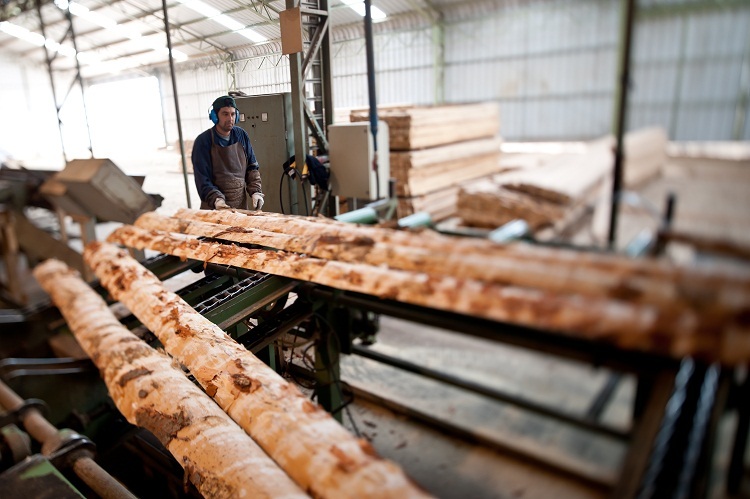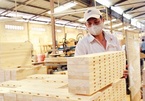The General Department of Customs (GDC) reported that in the first nine months of 2019, Vietnam’s woodwork exports brought $7.3 billion. Experts predicted that the targeted export surplus of $11 billion this year is within reach and the woodwork industry would continue seeing a two-digit growth rate.

According to Deputy Minister of Agriculture and Rural Development Ha Cong Tuan, the industry gained achievements not only because of the influence of the US-China trade war, but many other factors as well. He emphasized the sustainable material sourcing strategy.
Vietnam has 4.1 million hectares of planted forests. In 2018, Vietnam used 36 million cubic meters of legal wood for production, of which 8 million cubic meters were from imports.
| The wood industry is seeking new supply sources with legal origin certificates, aiming for sustainable development of the industry. |
“The potential of indigenous raw materials in Vietnam is huge. However, to implement the plan to boost exports, importing materials is a necessity,” he said.
Every year, Vietnam’s woodwork enterprises, both foreign invested and Vietnamese owned, spend $2 billion to import timber and wooden products.
Tuan affirmed that Vietnam is strictly observing the international regulations on using the materials with legal origin.
In the first nine months of 2019, Vietnam imported $1.9 billion worth of timber materials. According to the Vietnam Timber and Forestry Product Association (Vifores), the imports are mostly from the US and Europe. However, to diversify timber products, Vietnam has recently imported materials from Chile and New Zealand as well.
ProChile Vietnam, the trade promotion agency, reported that bilateral total import/export turnover has been increasing steadily since 2014 by 6 percent on average. As for timber materials, Vietnam imported $87 million worth of fir in 2018, a two-fold increase compared with four years ago.
Vietnamese woodwork manufacturers said they want Chilean fir because it has high quality and competitive prices. More importantly, Chilean timber is certified as having legal origin.
Of 2.4 million hectares of planted forests in Chile, 1.6 million hectares, which account for 70 percent, have FSC or Certfor/PEFC certificates. The timber exploitation in Chile has to follow the procedure set by CONAF, a state agency in charge of ensuring the legitimacy of timber sources from Chile.
Nguyen Thanh Quang from ProChile Vietnam said Chilean enterprises showed interest in Vietnam’s market. The representatives from well known brands such as Asun, Bagaro, Forestal LV, Kimwood and Pacific Forest came to Vietnam to seek partners.
In 2018, Chile exported $ 6.8 billion worth of forest products to foreign markets, including $2.7 billion worth of Radiata fir.
“The bilateral trade turnover in the future will certainly see significant development, especially in forestry,” Quang said.
Kim Chi

Vietnam's export of timber and wood products exceeds US$9 billion
The export of timber and wood products has exceeded the US$9 billion mark for the first time during the first 11 months of the year, according statistics released by the General Department of Vietnam Customs.

Vietnam needs ‘FDI filter’ for woodwork industry
The US-China trade war has led toChinese wooden furniture manufacturers moving production to Vietnam, bringing risks to the domestic woodwork industry.
 The wood industry is seeking new supply sources with legal origin certificates, aiming for sustainable development of the industry.
The wood industry is seeking new supply sources with legal origin certificates, aiming for sustainable development of the industry.